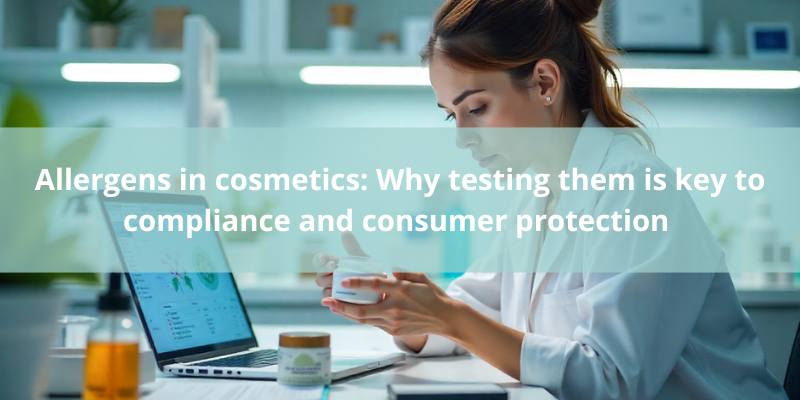
In recent years, the analysis of allergenic ingredients in cosmetic products has gained increasing importance — and for good reason. More and more consumers experience adverse reactions to certain products and demand transparency, safety, and regulatory compliance from brands.
Although European legislation regulates the use of sensitising substances in cosmetics, many companies are still unaware of their real obligations or underestimate the impact of an insufficient assessment of their formulations.
Allergens are substances or ingredients that can trigger allergic reactions in some individuals, especially after repeated exposure. They may be found in fragrances, preservatives, colourants, and natural extracts — even in products labelled as “natural” or “hypoallergenic.”
The issue is not merely their presence, but also their concentration, route of exposure (dermal, mucosal, or inhalation), and type of consumer: a product harmless to most may be problematic for a sensitive minority.
The Cosmetics Regulation (EC) No 1223/2009 requires that companies:
Note: The list of declarable allergens is currently being expanded by the European Commission, which means many brands will need to review both their formulas and labelling.
Unfortunately, practices such as greenwashing can confuse consumers and make informed choices more difficult.
However, both regulatory authorities and responsible brands are increasingly committed to carrying out thorough analyses, ensuring that allergen levels are minimal or clearly indicated on labels. This not only enhances consumer safety but also reinforces trust in brands and the cosmetics industry as a whole.
Allergen assessment should not rely solely on the ingredient list review — it must also include laboratory testing of the final product and a toxicological interpretation of the available data.
At ServiREACH, we support cosmetic manufacturers and distributors throughout the allergen evaluation process: